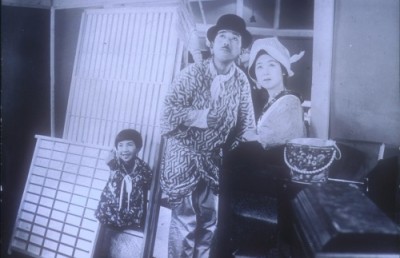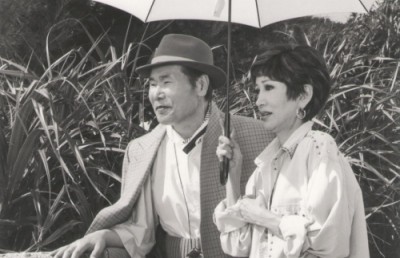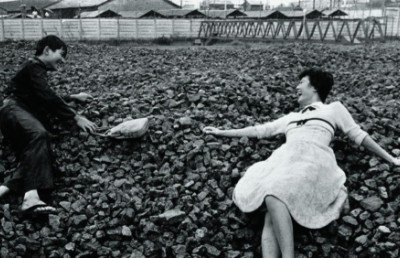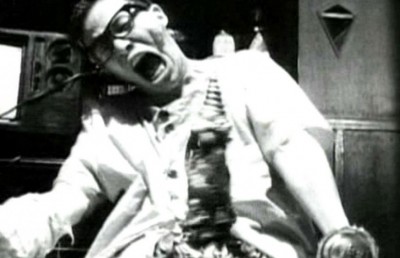An Inn in Tokyo and Mr. Thank You Seen through the Lens of Bazinian Realism
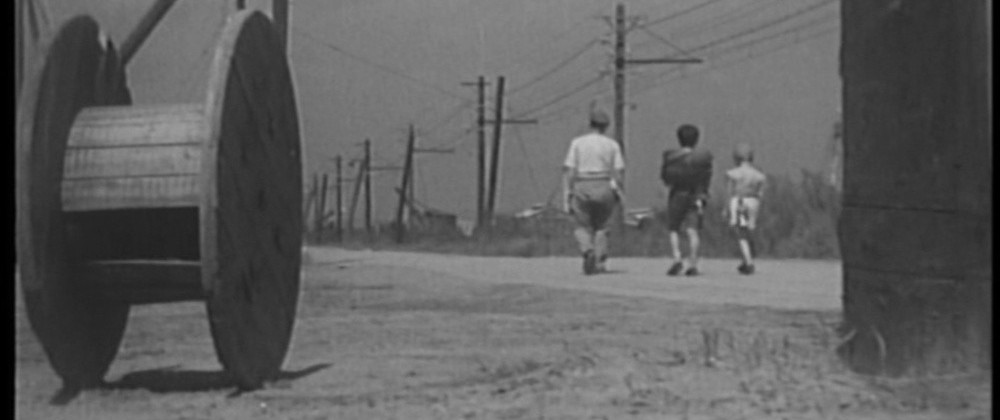
André Bazin admired the Italian neorealist films of the 1940s because they brought the medium closest to his ideal of cinema. Among the formal elements he singled out were filming in exterior settings, reliance on natural lighting, the casting of non-professional actors, the use of the long take and deep focus photography, characters with working class or regional accents, an episodic narrative that engaged with current social conditions and a directorial style that did not draw attention to itself. The purpose of these film techniques was to create a more realistic cinema, one that would reveal the essence of the world to the viewing audience. In the 1930s, there were several Japanese films that contained many of these elements. Two of the best, and best known, are An Inn in Tokyo (1935, Yasujiro Ozu) and Mr. Thank You (1936, Hiroshi Shimizu). Although there is no evidence Bazin saw either of these, examining them in terms of Bazin’s ideas on realism in cinema may serve to provide a useful perspective on both the films and the ideas.
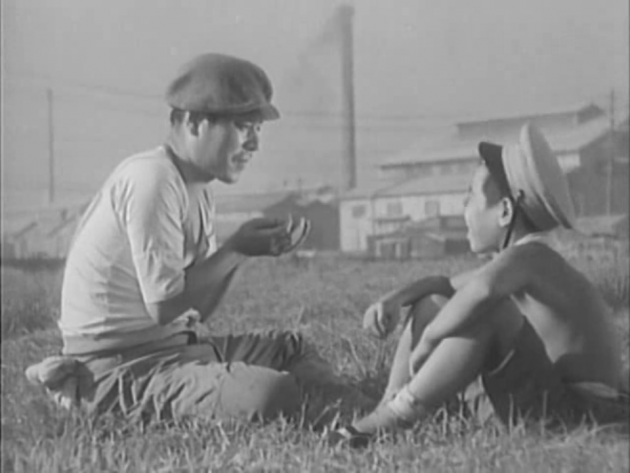
An Inn in Tokyo
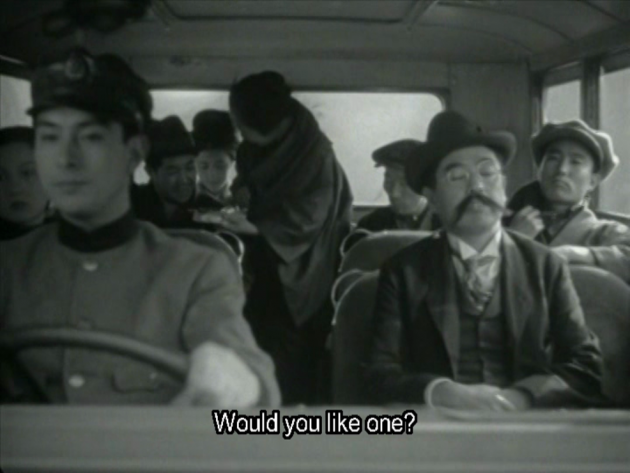
Mr. Thank You
This essay is necessarily speculative. Bazin was not translated into Japanese until 1967, and has had relatively little influence on Japanese cinema (Nozacki 325-6) and, of course, had no influence on how films were made in the 1930s. While Bazin did see, by his own count, between 20 and 25 Japanese films that were screened in France during the 1950s, they were almost exclusively the period action films and costume dramas known as jidaigeki , stories set before the 1868 Meiji Restoration which began the modernization of Japan (Bazin, “Lesson”: 189). He also did not see any pre-WWII Japanese films, and the only one with a contemporary setting that he saw, or at least wrote about, seems to have been Ikiru (1952, Akira Kurosawa). He admired these films, but was aware that at least part of their appeal to him was their “exoticism and strangeness” (Bazin, “Seven Samurai”: 196), isolating them from the historical context (both in terms of social situation, but also in terms of artistic style) that often played a key role in his evaluations of European and Hollywood films (Henderson 39).
The aspiration for realistic cinema was central to Bazin’s ideas. As he wrote in “The Ontology of the Photographic Image,” the “primordial function” of art is “the preservation of life by a representation of life” (10). Bazin argued that with the beginning of the use of perspective in painting in the 15th Century, artists became capable of recreating the illusion of three-dimensional space, but it was never a true copy of reality, since the art created always reflected the subjectivity of the artist (“Ontology”: 11-12). However, since the taking of a photograph was a mechanical process in which the photographer’s personality is not expressed in the same way as the artist, this produced two important implications. First, that since the photographic image was objective, it gained “a quality of credibility absent from all other picture-making” (“Ontology”: 13). No matter how poor a photograph it might be, the fact that it was a mechanical record of something that had existed in a specific time and place gives it an “irrational power” to convince us of its reality that even the most detailed and lifelike portrait lacks (“Ontology”: 13). As Dudley Andrew writes: “In a psychological sense, realism then has to do not with the accuracy of the reproduction but with the spectator’s belief about its origin” (76).
The second implication of the mechanical process is related to Bazin’s reason for wanting a realist cinema. Bert Cardullo writes that “(a)t the heart of Bazin’s strictures on cinematic realism lies the conviction that the movie camera, by the simple act of photographing the world, testifies to the miracle of God’s creation” (2011: 4). Realism, then, is a way of revealing the essence of God’s work. Because the camera involves an objective mechanical process, it removes any false suppositions that cloud our vision and prevent us from seeing the world as it really is and in this way reveals its essence. The photo image is exactly like consciousness because it presents the world stripped of all that is subjective and non-essential.
There are, of course, some problems with this idea of photography, or cinema, as an objective mechanical process. As Andrew points out, Bazin “never countered objections that would see in framing and drama an abstraction which has already spoiled the virginity of nature, making her submit to the inner demands of human consciousness” (122). Or, as documentarian Emile de Antonio less elegantly put it: “Filmmakers edit what they see, edit as they film what they see, weight people, moments, and scenes by giving them different looks and values. As soon as one points a camera, objectivity is romantic hype” (Vogels 144). Still, Bazin did not claim that cinema could ever produce an exact double of reality. There are abstractions caused by aesthetic decisions or technological necessity (such as black and white photography or the use of a plane surface) that replace reality and work against an exact reproduction of the world (Bazin, “Aesthetic”: 27). The cinema, according to Bazin, would always strive to approach reality, but would never achieve this, because then it would “cease to exist as cinema” (Cardullo 2011: 6). It is a sort of Zeno’s Paradox, with cinematic reality the arrow that always approaches its target of capturing the essence of the world, but never quite reaches it.
The films that Bazin believed came closest to achieving his ideal of cinema were the Italian neorealist films of the 1940s and 50s. Its main theoretician was Cesare Zavattini, who wrote the scripts for the Vittorio de Sica-directed neorealist classics Bicycle Thieves (1948) and Umberto D (1952), among others. He wrote that the film movement’s goal was, “instead of turning imaginary situations into ‘reality’ and trying to make them look ‘true’, to make things as they are, almost by themselves, create their own special significance” (65). Toward this end, he advocated filming stories of ordinary, non-glamorous people played by non-professional actors; have episodic stories that would not rely on plot twists, but reflect the rhythms of everyday life where the situations would evolve organically; leave the studios and film in areas where the poor lived; and have politically engaged themes. The politics would not be didactic, but would be the natural conclusions drawn from the real life situations presented. As Zavattini wrote, “the artist’s task is not to make people moved or indignant at metaphorical situations, but to make them reflect (and, if you like, to be moved and indignant too) on what they and others are doing, on real things, exactly as they are” (64).
One of Bazin’s favourite neorealist films was Bicycle Thieves (1948, Vittorio de Sica), about which he noted approvingly that “Not one scene [was] shot in a studio. Everything was filmed in the streets.” (“Bicycle Thieves”: 50). Cardullo argues that it was also a particularly unglamorous Rome on view, that “instead of the ancient’s ruins, we get contemporary ones: drab, run-down city streets, ugly, dilapidated houses, and dusty, deserted embankments that look out on a sluggish, dirty river Tiber” (Cardullo, “Neorealism”: 25-26). Beyond the authenticity to be found through location filming, Bazin saw an additional advantage in that it offered less opportunity to manipulate the world in the manner of, for example, German Expressionist cinema, which he claimed “did every kind of violence to the plastics of the image by way of sets and lighting” (“Evolution”: 26). This type of subjectivity imposed on the cinematographic image was exactly the sort of thing he believed prevented cinema from capturing reality’s essence.
In the use of exterior settings, the two Japanese films in some ways compare very well to Bicycle Thieves . For, while Bazin claims the film was entirely shot on the streets, there are a large number of interior scenes which, while they were presumably “authentic” (the apartments were real apartments, the restaurant a real restaurant and so on, with nothing recreated in the studio), still offered the opportunity for expressive lighting, even though Bazin suggests it should play “only a minor expressive role” (“Aesthetic”: 33). The dramatic use of lighting is even more prevalent in exterior scenes, such as the dramatic sunset and figures silhouetted in black to express Ricci’s despondency when he picks up Bruno at the end of the day when his bicycle is stolen. In addition, despite Cardullo’s description of a ruined Rome, it must be said that there are some memorably photogenic ruins, such as the interior of the union hall with its series of arches.
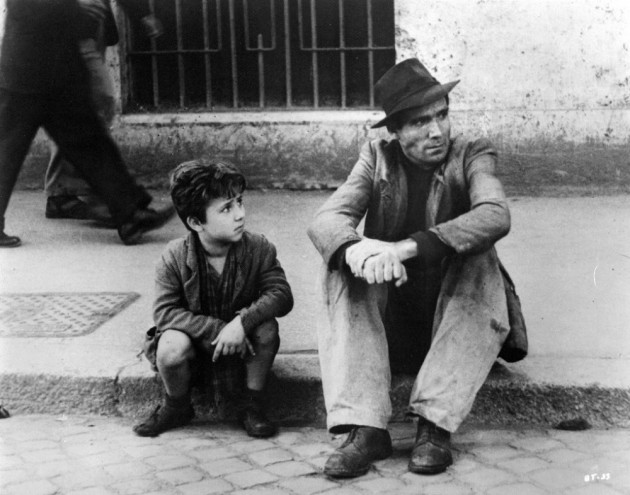
Drab urban landscape in Bicycle Thieves
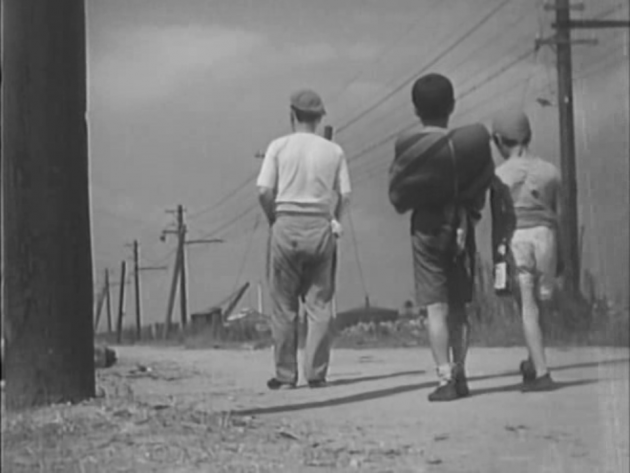
Drab suburban landscape in An Inn in Tokyo
By contrast, while An Inn in Tokyo recreates the interior of an inn and a market street in the studio, the heart of the film is set in a series of drab landscapes that strongly resemble each other, all punctuated by desolate factory towers and fields overgrown with weeds and abandoned wooden wheels. In fact, the setting was a characteristic of a series of films produced in the 1930s at Shochiku Kamata studio. The studio was located in a Tokyo suburb, and the filmmakers routinely went into the area surrounding it to film stories set in “empty fields with low density population, yet with the partial signs of encroaching development – new sewer pipes, telephone poles, railroad lines in the background, the visible conduits of the city’s relentless outward expansion” (Wada-Marciano 120). Most of these films, such as I Was Born, But (1932, Yasujiro Ozu) or Flunky, Work Hard! (1931, Mikio Naruse), were narratives of lower middle class life, and, while realist, were not nearly as bleak as An Inn in Tokyo , suggesting that even in open air locations, the choice of subject and how it is framed offers possibilities of manipulation for the director.
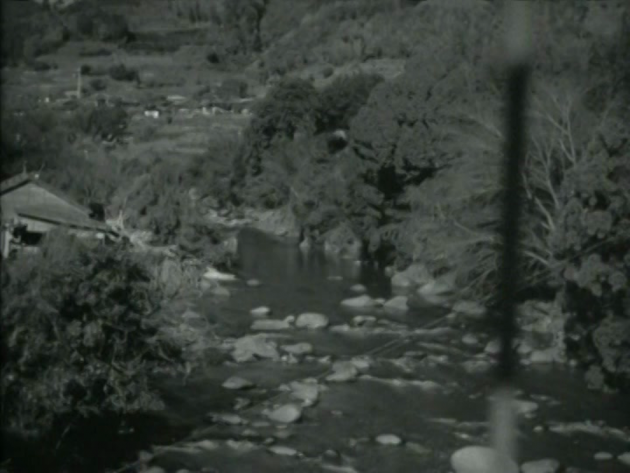
Documenting the Japanese rural landscape: Mr. Thank You
Although some of the scenes shot inside the bus in Mr. Thank You look like they might be using rear projection, the film was apparently shot entirely on location (Richie 51). Indeed, much of the film consists of documentation of the landscape the bus passes through. Far more than Bicycle Thieves , the film seems less concerned with its nominal plot than with preserving (embalming, Bazin might say) a record of a disappearing world. Like the exteriors in An Inn in Tokyo , Mr. Thank You relies on natural light and makes no use of expressive shadows. Except for the cramped bus, all of Mr. Thank You ’s scenes take place in location settings such as bus stations or roadside stops. This was one reason why Shimizu’s road movies were called shajitsushugi eiga , which “connotes an unmediated record of reality” (Wada-Marciano 58). An interesting context for these two films is that they represent a shift in the type of realist films being made in Japan. An Inn in Tokyo was one of the last films made before Shochiku closed down Kamata and moved to its new Ofuna studio, where it began to focus on films about wealthier characters. At the same time, Mr. Thank You was one of the first films to deal realistically with the countryside, a possible response to both a change in cinema attendance and technological advances that made filming in remote mountainous areas easier. Whereas in the early 1930s most cinemas were in urban areas, particularly Tokyo, the mid-1930s saw a boom in the construction of new cinemas in the countryside. So while the old urban audience seemed to have responded to realistic portrayals of their lives but idealized narratives of country life, such as The Dancing Girl of Izu (1933, Heinosuke Gosho), the new rural audience seemed to be interested in more realistic portraits of the countryside and a more idealized representation of the city (Hayashi 3). As Sharon Hayashi writes about this new trend, which included Mr. Thank You: “After the mid-1930s the landscapes turned from portraying the countryside as a bucolic antidote to urban ills to an investigation of agricultural crisis and the conditions of the farm village” (Hayashi 2).
An important similarity in the way both the Japanese films and Bicycle Thieves used their location settings is in the frequent use of long shots to frame the characters as part of the larger landscape. When Ricci and Bruno wander through Rome, the ruined buildings are always visible behind them; when Kihachi and his sons squat wearily on the barren ground or trudge down an anonymous road, there is always a nearby factory silo or a broken piece of equipment; and when Mr. Thank You descends from the bus for a rest, he is inevitably framed against a distant mountain range. But while it is possible, at least in the case of Bicycle Thieves and An Inn in Tokyo , to read these settings as symbols of the societies their characters inhabit, it seems more sensible to accept that in the context of these narratives, they are only intended to be what they seem to be. The factory is just a factory, the mountains are just mountains, and while the Tiber River may be muddy, it is still just the Tiber. They have the weight they carry by their existence, but no extra symbolic weight in these films.
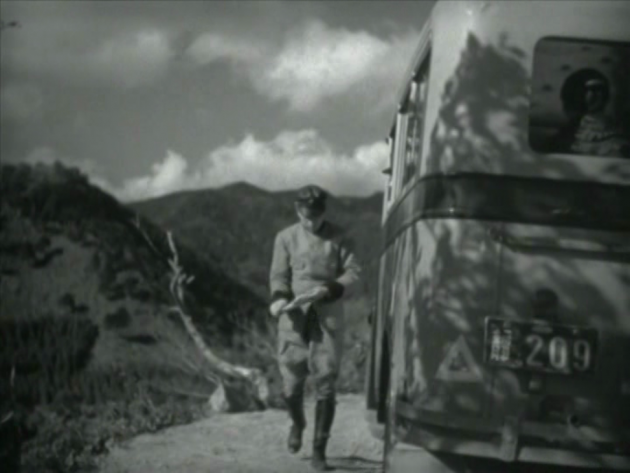
Mr. Thank You framed against the mountainside
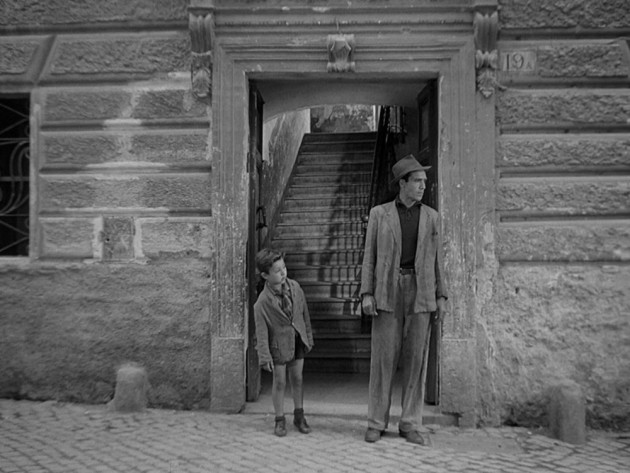
Ricci and his son framed against a crumbling Rome
Bazin was impressed that none of the performers in Bicycle Thieves had any acting experience (“Bicycle Thieves”: 50). However, he did not necessarily advocate this in all cases, proposing instead what he termed the “law of the amalgam.” The problem, he suggests, is not professional performers as such. The mixing of professionals and amateurs was perfectly acceptable in realist films as long as the professional was not cast in the type of role he was known for, because “the public should not be burdened with any preconceptions” (“Aesthetic”: 23-24). Using the viewer’s previous knowledge of an actor would be a manipulation of the audience and an undermining of reality, because it would invest in their characters elements that would be impossible to perceive otherwise. It is an element that needs to be stripped away because it prevents the viewer from seeing the essence of the real world. The ideal relationship between actor and audience is one where it is “not moved by the actor or the event, but by the meaning … [it is] forced to extract from the action” (Bazin, “Germany Year Zero”: 60).
Bicycle Thieves , in a sense, is an exemplar of this approach. However, while Bazin approvingly writes that the proper casting method would be that “nonprofessionals are naturally chosen for their suitability for the part, either because they fit it physically or because there is some parallel between the role and their lives” (“Aesthetic”: 24), this partial revival of Soviet typage poses a problem. Doesn’t the casting of someone who “looks the part” count as an example of using preconceived audience ideas about how certain types of characters should look and therefore qualify as a type of manipulation, an investing in a performer attributes that might not be there in actuality? The Japanese films, both made for a studio which employed a stable of star and character actors, most of whom it ruthlessly typecast, for the most part engaged in a more direct audience manipulation. This is particularly true of An Inn in Tokyo , which uses only professional actors. As David Bordwell writes, “Ozu uses stars exactly as his Hollywood counterparts would, as a repository of associations from other roles” (1988: 71). For example, Takeshi Sakamoto (Kihachi) in this film played a muted version of the loveable, but good for nothing, man-child he typically played. In the earlier Passing Fancy (1933), he even played the same character, or at least a variation on him who shared the name Kihachi, since he only had one son in that film.
Showing a sympathetic, normally ebullient figure being beaten down by hunger and unemployment to create pathos is a typical example of how star personas are used by filmmakers. Another example is Yoshiko Okada, who plays Otaka, the woman with the daughter. She had an offscreen image as a moga (Westernized “modern girl”), but in films, she “typically played dispirited, financially insecure, even doomed women; the noticeable gap, or counterpoint, between these roles and her offscreen image encouraged the audience to read other meanings into her performance” (Russell 36). Other examples of typecasting include Choko Iida, appearing in her usual role as a plain, but good hearted middle aged woman, and Kihachi’s older son (Zenko) being played by Tomio Aoki, who had also played Kihachi’s son in Passing Fancy . In an earlier film, Aoki had played a character described as “Tokkan Kozo,” meaning “straightforward (in the sense of cheeky) boy” and sometimes was billed in films under that name. These types of associations (or audience preconceptions) was precisely what Bazin objected to.
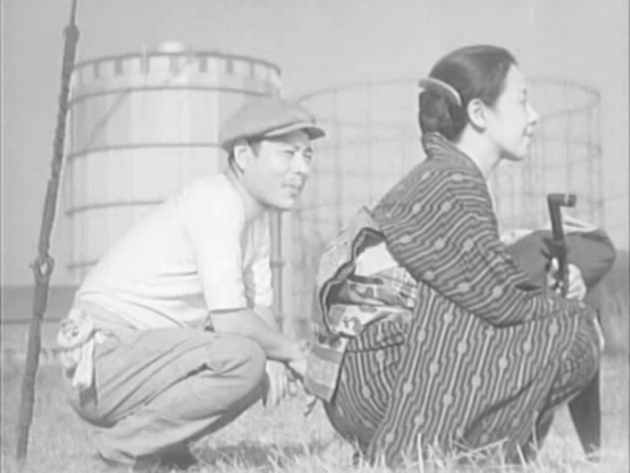
Takeshi Sakamoto (Kihachi) and Yoshiko Okada (Otaka): star personas used to inflect material in An Inn in Tokyo
Mr. Thank You , on the other hand, had that amalgam of professionals and amateurs that Bazin recommended. While most of the bus passengers were played by professionals, some of them, and all the people the bus met along the way, were actually the traveling entertainers, village folk and itinerant labourers they portrayed. Just as Shimizu was intent on documenting the countryside, he was just as interested in the figures who typically inhabited that landscape. However, there is at least one example of an actor’s persona being used in the traditional way, as Mitsuyo Wada-Marciano notes that “when the film was released, the actress Kuwano Michiko, who plays the role of the bar hostess, was already an established star and much more popular in comparison with the unknown actress in the indentured daughter’s role. The film encourages the audience to see Kuwano with respect in light of her character’s devotion to the younger couple” (Wada-Marciano 69).
Associated with the question of performance are the issues of language and sound. A basic criticism Bazin had of silent cinema was that “the silence of the screen was a drawback, that is to say, it deprived reality of one of its elements” (“Evolution”: 28). As a silent film, An Inn in Tokyo had what Bazin would have seen as a central abstraction of reality. However, the other two films had a similar approach to dialogue. Zavattini clearly stated that “the best dialogue in films is always a dialect. Dialect is nearer to reality” (69). Similarly, several Japanese filmmakers, including Shimizu, saw the use of regional accents or dialects as an important tool to convey realism in films with rural settings (Hayashi 27). A formal element related to sound that Bazin does not write much about is the music soundtrack. Although he typically condemns the use of any film techniques that try to tell the viewer what to think, he does not criticize the use of somber music at the beginning of Bicycle Thieves , or the swelling violins that underline emotional scenes and seek to manipulate audience reaction. More in keeping with the minimizing of visible film technique is the diegetic music played during the restaurant scene. Mr. Thank You also relies on a non-diegetic music soundtrack, but it is much less obtrusive.
A key distinction Bazin draws is between filmmakers “who put their faith in the image and those who put their faith in reality” (“Evolution” 24). The means of drawing this distinction is in their use of the long take and deep focus cinematography. In neorealism he found a style that contrasted “with previous forms of film realism in its stripping away of all expressionism and in particular in the total absence of the effects of montage” (“Evolution”: 37). Most of the dangers of expressionism are avoided through the use of location exteriors, but that leaves montage. Bazin’s problem with montage was that it did not directly present reality, but merely alluded to it. That is, the information it conveyed was not in the images it showed but in the associations created by the juxtapositions of the images, investing in the objects filmed something that was not inherently present in these objects (“Evolution”: 25). A second problem with montage was that it filmed an event that had a specific duration, but did not respect that duration. As Cardullo writes: “In the name of higher realism . . . Bazin celebrated the long, uninterrupted take for its capacity to simulate the most elemental aspect of nature – its continuousness” (2011: 9). Related to this is the problem of analytical editing, which tended to “destroy in particular the ambiguity inherent in reality. It ‘subjectivizes’ the event to an extreme, since each shot is the product of the director’s bias” (Bazin, “Wyler”: 8). Cutting, either in Soviet montage or in Hollywood-style analytical editing, carved reality into little pieces and precluded any other interpretation of the action other than that of the filmmaker. The ability of a viewer to use their free will in deciding what to focus on was another aspect that was very important to Bazin. Beyond the long take, the key technique favoured by Bazin to encourage this possible use of free will was deep focus cinematography, which allowed the photography of multiple planes of action (typically in foreground, middle ground and background) which remain equally in focus. Bazin wrote that through “depth of field, at times augmented by action taking place simultaneously on several planes, the viewer is at least given the opportunity in the end to edit the scene himself, to select the aspects of it to which he will attend” (“Wyler”: 8). The image itself becomes ambiguous, and it is now up to members of the audience to each decide what is important to watch and what is not.
All that said, neither Bicycle Thieves nor either Japanese film makes extensive use of the long take. Bicycle Thieves has some reasonably long tracking shots, such as when the camera moves down the endless row of bicycles for sale at the open air market, but it is not in the same league as a neorealist film such as La Terra Trema (1948, Luchino Visconti) with its series of three minute takes, or a contemporary non-neorealist film such as Letter from an Unknown Woman (1948, Max Ophuls). The Japanese films use a type of analytical editing that David Bordwell describes as a “piecemeal” style, involving in interior scenes few master shots and an unusually large number of shots, often for close-ups on faces, hands and objects (1995: 21). A striking example of this which Bazin would probably disapprove of is that the common room of the inn which is revisited several times in An Inn in Tokyo is never shown in its entire space through a master shot to establish the geography, which would be standard under Hollywood’s continuity style. Instead, Ozu carves out sections of it which focuses on a character, but parts of bodies protrude into the edges of the frame to suggest offscreen space. All three films use depth, particularly when placing figures within a landscape. Possibly the most effective use of deep focus is in Mr. Thank You , where Shimizu will often keep the several rows of passengers in focus, and it is possible to either focus on the bogus salesman fiddling with his fake moustache in the front row, the sardonic itinerant bar hostess/prostitute in the aisle across from him, or perhaps the ingénue in the last row.
Another important element for neorealism was the use of an episodic narrative. Even this was more than Zavattini wanted, as he believed that the “centre of neorealism” would only be reached when there was no story of all (66). Bazin writes about Bicycle Thieves that it “unfolds on the level of pure accident: the rain, the seminarians, the Catholic Quakers, the restaurant – all these are seemingly interchangeable, no one seems to have arranged them in order on a dramatic spectrum” (“Bicycle Thieves”: 59). Here it is possible to disagree with Bazin and see schematic plotting. From the moment his bicycle is stolen, Ricci is inevitably on the road to becoming the very thing he despises, a bicycle thief. Still, all three films have episodic structures, as they consist of a series of encounters, many of them capable of being easily shuffled to other parts of their narratives without any damage to the films and almost entirely lacking in suspense or contrivance. Both Bicycle Thieves and An Inn in Tokyo have bursts of melodrama at the end, with the Ozu film (which also has a sick child with a parent unable to afford hospital care, a melodramatic staple of Shochiku films) less capable of claiming that the plot twist grew organically from the situation. It should also be noted they share a basic plot situation of a man desperate for work wandering through an unsympathetic landscape with son (or sons) in tow. Mr. Thank You , on the other hand, does have the melodramatic storyline of a girl being sold into prostitution, but often neglects it in favour of the other bus passengers or people met on the road, many of whom get at least as much attention as the victimized girl. Finally, almost as an afterthought, the girl’s storyline is returned to with four minutes left in the film and resolved in a few seconds. There is a plot; it just does not carry nearly as much weight as the documented landscape.
A central and essential characteristic of neorealism is the “contemporary relevance of its themes and the realism of its language” (Bazin, “Italian Cinema”: 142). As it issued “like a swarm of bees from the decaying corpse of fascism and war” (Bazin, “Aesthetic”: 17), it was necessarily political. As Zavattini wrote, “neo-realism can and must face poverty. We have begun with poverty for the simple reason that it is one of the vital realities of our time” (67). But Bicycle Thieves does not engage with contemporary social conditions only through its plot, it also does it through the gaunt faces of the poor and the battered landscape. Similarly, An Inn in Tokyo does not offer explicit solutions. It is enough to show the daily life of one of the downtrodden. If the essence of the reality has been adequately captured, then the situation will speak for itself. Mr. Thank You has perhaps the most interesting engagement with its social situation. Beyond the straightforward depiction of selling young girls into prostitution, the film featured characters that were rarely, if ever, seen in Japanese films of that era. As Hayashi notes, “Shimizu’s films featured the lives of the forgotten lumpenproletariat, migrant and itinerant labor, single mothers and delinquent children, and traveling prostitutes” (Hayashi 193). In particular, the sympathetic portrayal of an itinerant Korean road worker is highly unusual. In a way, although it seems the least directly political, it can be considered the most subversive in terms of its social and historical context.
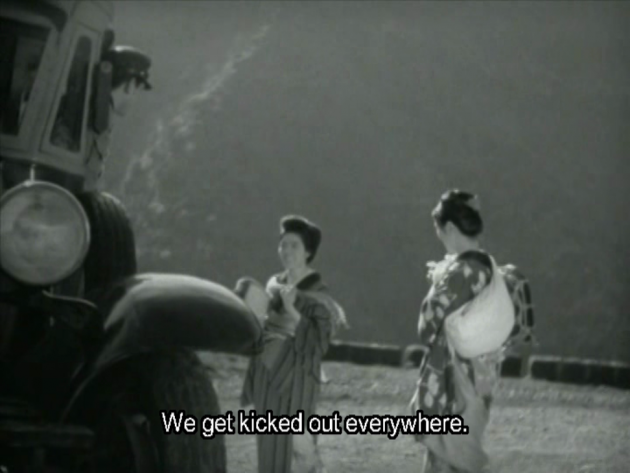
Mr. Thank You and the itinerant musicians
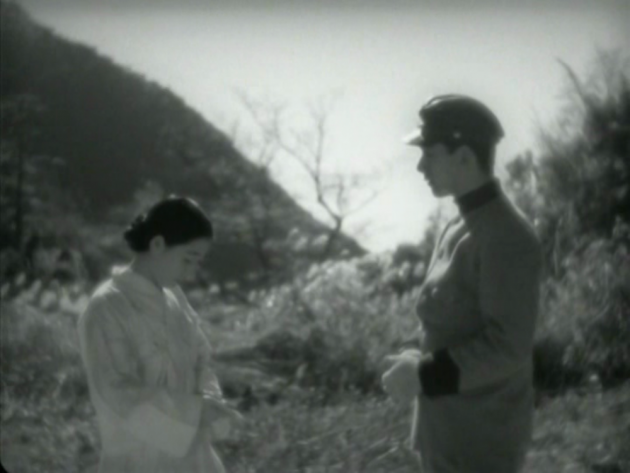
Mr. Thank You and the Korean road worker
Bazin felt it was crucial to the conveying of reality that the audience be unaware of the complexity of the film techniques used. Bazin wrote that “realism in art can only be achieved in one way – through artifice” (“Aesthetic”: 26). Part of this artifice was the self effacement of the director, with Bazin arguing that “when this self-effacement is at its extreme, the story and their actors are at their most powerful” (“Wyler”: 2). Bicycle Thieves , with its tracking shots, dramatic musical crescendos, occasional stylish use of shadow and silhouettes, and camera flourishes, such as when the camera suddenly tracks in on Ricci as he stops and turns to face the jeering mob who has gathered to protect the real thief, does not entirely succeed in effacing itself. Neither does Mr. Thank You , with Shimizu’s distinctive tracking shots which at times seem to go through the pedestrians the bus passes. For all that, all are convincingly realistic portrayals of what Zavattini calls the “dailyness” of people’s lives in specific times and places.
For Bazin, the most crucial element in the achievement in cinematic realism was that it provided the possibility of an exercise in free will by the viewer. As Bazin writes, “Isn’t this, then, a sound definition in art: to force the mind to draw its own conclusions about people and events, instead of manipulating it into accepting someone else’s interpretation?” (“Germany Year Zero”: 60).
Works Cited
Andrew, Dudley. André Bazin . New York, NY: Oxford University Press, 1978.
Bazin, André. “An Aesthetic of Reality: Neorealism.” What Is Cinema? Vol. 2 . Berkeley, CA: University of California Press, 2004, 16-40.
—. “Bicycle Thief.” What Is Cinema? Vol. 2 . Berkeley, CA: University of California Press, 2004, 47-60.
—. “Germany Year Zero.” André Bazin and Italian Neorealism . Ed. Bert Cardullo. New York, NY: Continuum, 2011, 57-60.
—. “In Italy.” André Bazin and Italian Neorealism . Ed. Bert Cardullo. New York, NY: Continuum, 2011, 117-141.
—. “The Evolution of the Language of Cinema.” What Is Cinema? Vol. 1 . Berkeley, CA: University of California Press, 2004, 23-40.
—. “The Myth of Total Cinema.” What Is Cinema? Vol. 1 . Berkeley, CA: University of California Press, 2004,17-22.
—. “The Ontology of the Photographic Image.” What Is Cinema? Vol. 1 . Berkeley, CA: University of California Press, 2004, 9-16.
—. “William Wyler, or the Jansenist of Directing.” Bazin at Work . Ed. Bert Cardullo. New York, NY: Routledge, 1997, 1-22.
Bordwell, David. Ozu and the Poetics of Cinema . Princeton, NJ: Princeton University Press, 1988.
—. “Visual Style in Japanese Cinema, 1925-1945.” Poetics of Cinema . New York, NY: Routledge, 2007: 337-374.
Cardullo, Bert. “Defining the Real: The Film Theory and Criticism of André Bazin.” André Bazin and Italian Neorealism. Ed. Bert Cardullo. New York, NY: Continuum, 2011, 1-17.
Hayashi, Sharon H. “Travelling Film History: Language and Landscape in the Japanese Cinema, 1931-1945.” PhD thesis, university of Chicago, 2003.
Henderson, Brian. “The Structure of Bazin’s Thought.” A Critique of Film Theory . New York, NY: E.P. Dutton, 1980, 32-47.
Nozacki, Kan. “Japanese Readings: The Textual Thread.” Opening Bazin: Postwar Film Theory & Its Afterlife . Ed. Dudley Andrew. New York, NY: Oxford University Press, 2011, 324-329.
Richie, Donald. A Hundred Years of Japanese Film . New York, NY: Kodansha, 2001.
Russell, Catherine. “New Women of the Silent Screen: China, Japan, Hollywood.” Camera Obscura . 20.3, 2005, 1-13.
Vogels, Jonathan B. “Looking into Grey Gardens.” The Direct Cinema of David and Albert Maysles . Carbondale, IL: Southern Illinois University Press, 2005, 144.
Wada-Marciano, Mitsuyo. “The Production of Modernity in Japanese Cinema: Shochiku Kamata Style in the 1920s and 1930s.” PhD thesis, University of Iowa, May 2000.
Zavattini, Cesare. “Some Ideas on Cinema.” Vittorio de Sica: Contemporary Perspectives . Ed. Howard Carle and Stephen Snyder. Toronto, ON: University of Toronto Press, 2000, 64-69.



